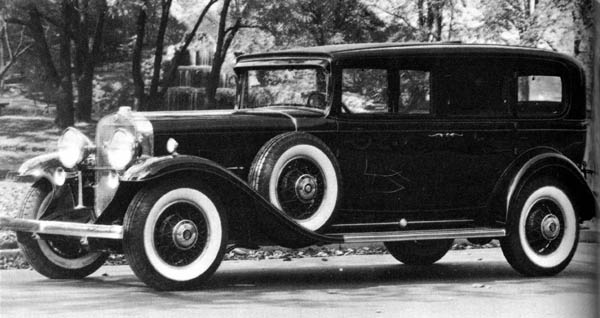
1931 Cadillac V12 sedan
In 1930 General Motors introduced both the 16-cylinder 452 and the 12-cylinder 370
just as the Great Depression was gaining momentum, both in America and
throughout the world.
Of course, General Motors did not intend introducing these new models at a time of
economic hardship but they had been in the planning stage for some time prior to
this. Because Cadillac had lost its market leadership to Packard in the large car
class in the 1920s, General Motors management set out to regain market share with
a bigger and better car.
The car in which Packard had established its market lead followed the design of the
great European cars, being fitted with a V12 cylinder engine. To counter its sales
success Cadillac saw the need to go one better with a car which would go faster, be
more powerful, more refined and had more cylinders than anything else available. It
would simply not be good enough to enlarge the existing Cadillac V8 to surpass the
Packard. The entire project was cloaked with secrecy within General Motors and
most of their staff thought they were developing a commercial vehicle as all projects
associated with the new engine were coded either ‘bus’ or ‘coach’. The result was a
16-cylinder engine.
The new engine ran extremely smoothly, as one would expect with so many
cylinders, and the smoothness was also attributed to the fact that the engine was the
first production model ever to use a form of hydraulic tappet. Suspension was
comparable with that used by Rolls-Royce as General Motors had hired a Rolls-
Royce engineer who was working in the United States at that time to develop a new
suspension system for them.
Despite all its good points the 16-cylinder 452 suffered a rapid sales decline after the
first initial rush and it was decided to produce a less expensive version in conjunction
with the 452 to suit the hard times of the 1930s.
This new Cadillac, the 370, used the same chassis but with a V12 cylinder 6019cc
version of the V16 that was every bit as smooth and silent as the larger engine and
proved far more practical in operation. The car had three forward ratios in the
manual transmission and a live rear axle and was capable of a top speed of just over
150km/h. Several body styles were offered, including open and closed sedan models
in two-, five- or seven-seater versions. The seven-seater version had an elegant tail
concealing a dickey’ seat.
Throughout the early 1930s both cars continued to be sold but as each year rolled by
the 370 with its V12 engine consistently outsold the V16 model, proving to General
Motors that they were better to stick with a car that appealed more to the mass
market than chase after the big spenders of high society.